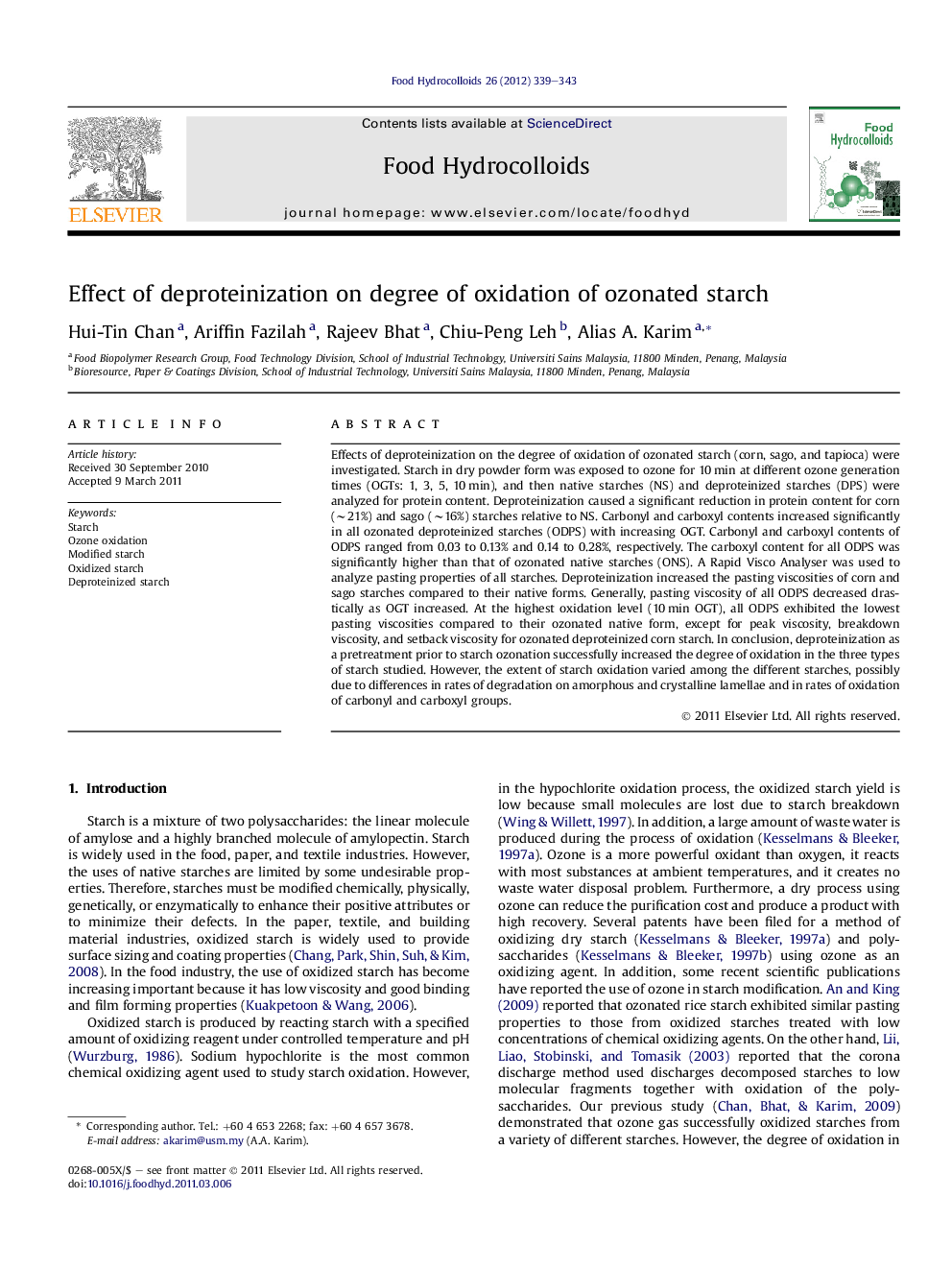| Article ID | Journal | Published Year | Pages | File Type |
|---|---|---|---|---|
| 604429 | Food Hydrocolloids | 2012 | 5 Pages |
Effects of deproteinization on the degree of oxidation of ozonated starch (corn, sago, and tapioca) were investigated. Starch in dry powder form was exposed to ozone for 10 min at different ozone generation times (OGTs: 1, 3, 5, 10 min), and then native starches (NS) and deproteinized starches (DPS) were analyzed for protein content. Deproteinization caused a significant reduction in protein content for corn (∼21%) and sago (∼16%) starches relative to NS. Carbonyl and carboxyl contents increased significantly in all ozonated deproteinized starches (ODPS) with increasing OGT. Carbonyl and carboxyl contents of ODPS ranged from 0.03 to 0.13% and 0.14 to 0.28%, respectively. The carboxyl content for all ODPS was significantly higher than that of ozonated native starches (ONS). A Rapid Visco Analyser was used to analyze pasting properties of all starches. Deproteinization increased the pasting viscosities of corn and sago starches compared to their native forms. Generally, pasting viscosity of all ODPS decreased drastically as OGT increased. At the highest oxidation level (10 min OGT), all ODPS exhibited the lowest pasting viscosities compared to their ozonated native form, except for peak viscosity, breakdown viscosity, and setback viscosity for ozonated deproteinized corn starch. In conclusion, deproteinization as a pretreatment prior to starch ozonation successfully increased the degree of oxidation in the three types of starch studied. However, the extent of starch oxidation varied among the different starches, possibly due to differences in rates of degradation on amorphous and crystalline lamellae and in rates of oxidation of carbonyl and carboxyl groups.
Graphical abstractFigure optionsDownload full-size imageDownload as PowerPoint slide
